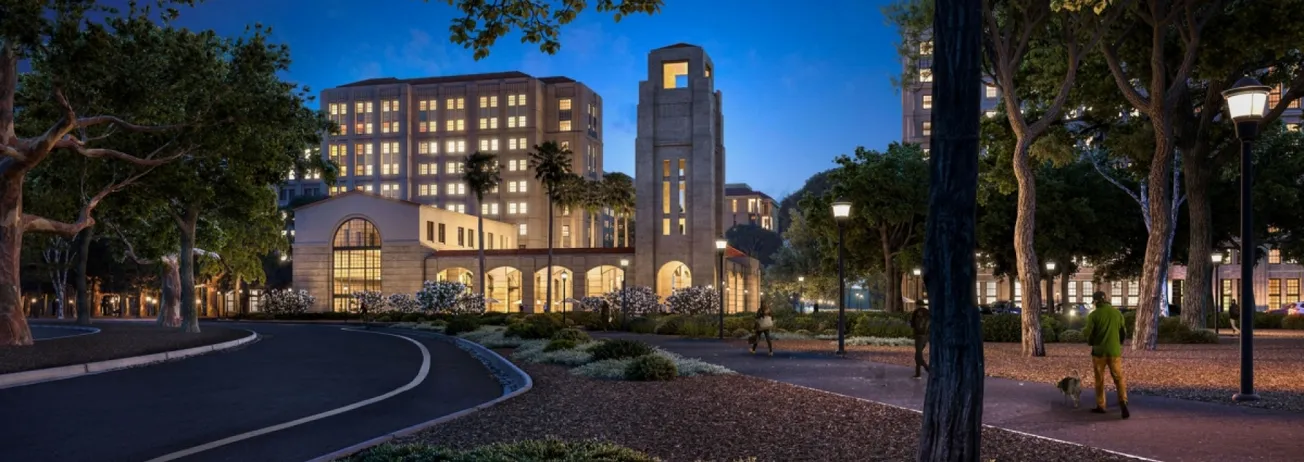Table of Contents
After a lengthy sixteen-and-a-half months away from campus, I was ecstatic when my friends and I drew into the newly-built and much-lauded housing in Escondido Village. Escondido Village Graduate Residences, EVGR, happens to growl at you every time you utter its name Ev(grrr!). But when I heard about the spacious living areas, where bathrooms are as large as frosh dorms, and refrigerators are supersized, I thought we were finally reaping the rewards for enduring GovCo our junior year. How wrong I was! To the poor frosh in Neighborhood F, avoid EVGR at all costs, it may be the end of your dormitory social life.
EVGR is not without its niceties. Having your own odor-free bathroom, plenty of quiet space within your room to work, and a convenient set of kitchen appliances sounds like a pleasant setup. But as the initial excitement fades, it is becoming abundantly clear that the elements of comfortable living which successfully insulate you from your neighbors also isolate you.
Meanwhile, down the California coast, UCSB has recently drawn ire for its approval of Charlie Munger’s plans to build a 11-story structure that would house up to 4,500 students, 94 percent of whom would not have windows in their single-occupancy bedrooms. The eccentric and hard-nosed value investor likes to fund university dorm builds and has a philosophy of nudging students out of their rooms into collaborative common spaces to talk, work, and play. Munger Hall at UCSB brings Charlie’s perspective to its conceptual end limit, where students will be placed in windowless pod-like structures. The constricting ambiance means to squeeze even the most asocial of undergrads into the commons. If built, UCSB’s Munger Hall would be the 8th densest neighborhood in the world, right after Dhaka, Bangladesh. Enraged, an architect on the UCSB’s design committee resigned, claiming the approved housing was inhumane.
While Mungerville might evoke the sentiment of an overcrowded prison, EVGR exudes the air of a comatose psychiatric ward. In contrast to Charlie’s philosophy, while Mungerville might be overcrowded, EVGR enforces social distancing! The 10-story building houses multiples fewer undergrads per square foot and lacks any decor or warmth to it. A pasty beige glosses over the entirety of the empty halls. Occupancies are more than six feet apart, hallways are more than six feet wide, pretty much every room is more than six feet apart! With the excessive separation, never-ending halls, and its own blatantly prescription-like medicinal name, it is hard not to wonder whether EVGR is a retro-fitted hospital ward as you meander down to your unit.
Beyond this problem of emptiness and utterly unused space, a host of other details compounds EVGR’s bent towards isolation. A single small common room is placed on one extreme of the entire floor rather than at the center. Then comes the aptly named “huddles,” where students shelter and shield themselves from their neighbors to work on their problem sets. Automatic locks on every single door, for common rooms, huddles, laundry, even the garbage disposal, further imbue the dormitory with a securitizing aura, chilling opportunities for open doors, spontaneous encounters, and friendly chit-chat. To make matters worse, key cards only work on a student’s own floor, shutting down opportunities for cross-floor mingling. Perhaps the saddest of all is that after a full quarter of living in EVGR, we still do not know the names or faces of the people living to our immediate right, left and across. We have never met, talked to, or even gotten to say hi to these ostensibly pleasant human beings. A tragedy of this proportion would have been unthinkable in Cedro, my freshman year dorm.
In contrast, Mungerville’s floor plans are far more deliberately designed to foster student engagement and collaboration. Shared workspaces greet students right as they exit their bedrooms. In addition to those spaces, each floor is literally surrounded with attractive common rooms, equipped with an open-aired workspace, kitchen and game room. Incredibly, the top floor has been designed entirely for student recreation - fitted with a fitness center, landscaped courtyard, reading/gaming rooms, and pub!
Mungerville’s House Plan, Source: Scoping Hearing Presentation on Munger Hall
In the end, Mungerville and EVGR offer two radically different visions for student-living in Universities, but only one makes a legitimate attempt to address the problem of student alienation, loneliness, and lost sociality. Where Mungerville propels people out of their rooms, EVGR sucks them in. Where Mungerville seeks to centralize the commons, EVGR places them at the extremes. Unfortunately, EVGR only seems to accelerate the modern retreat of the individual to interiority, prioritizing their comfort, security, and self-care over connection with neighbors and the outside world.
Can anything be done to fix this sorry state of affairs? In the short term, It seems little is possible, as isolating liturgies were ingrained into the very structure of EVGR. Only student ingenuity and intentionality may turn the tide against this structural bias. Indeed, just prior to winter break, signs of student culture-making and communion began to sprout. Gentlemen on the first floor opened a fun looking coffee shop. A random flyer titled the “EVGR Beautification Project '' appeared! So with a new year ahead, my friends and I will try to say hi, get to know our neighbors, and find a way to make use of these golf-kartable hallways. I hope a few more of us can do the same.





